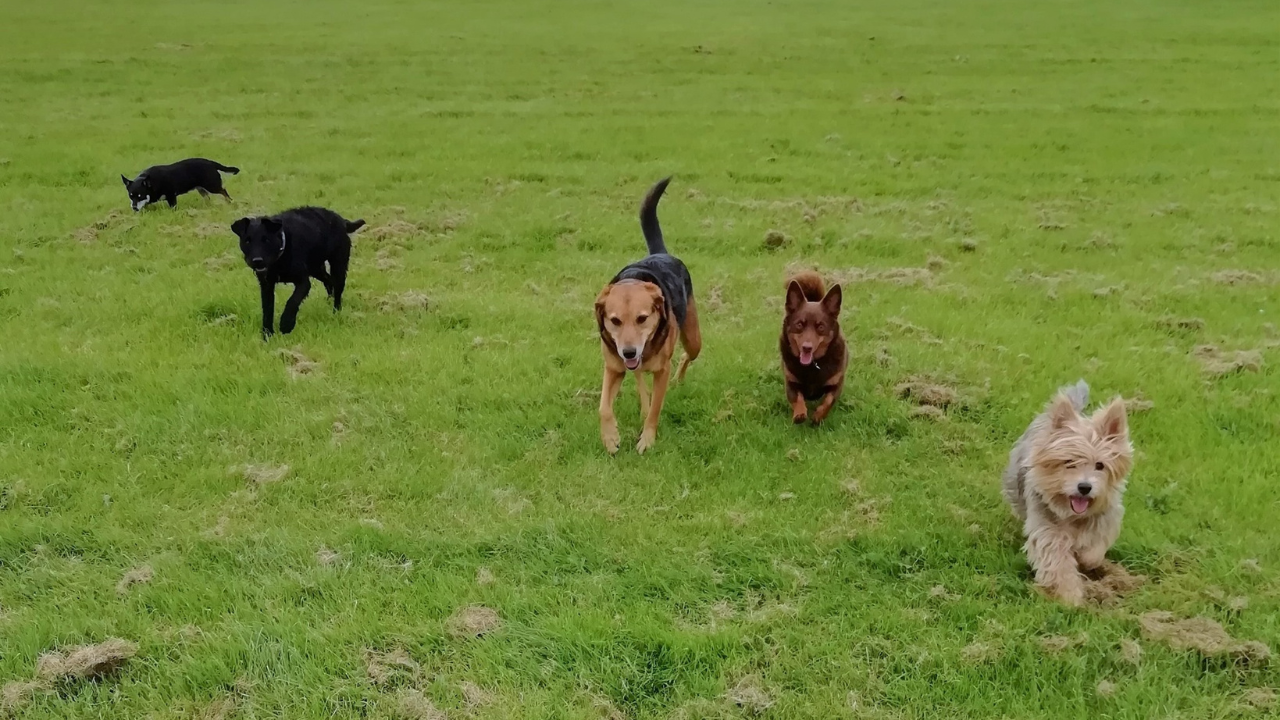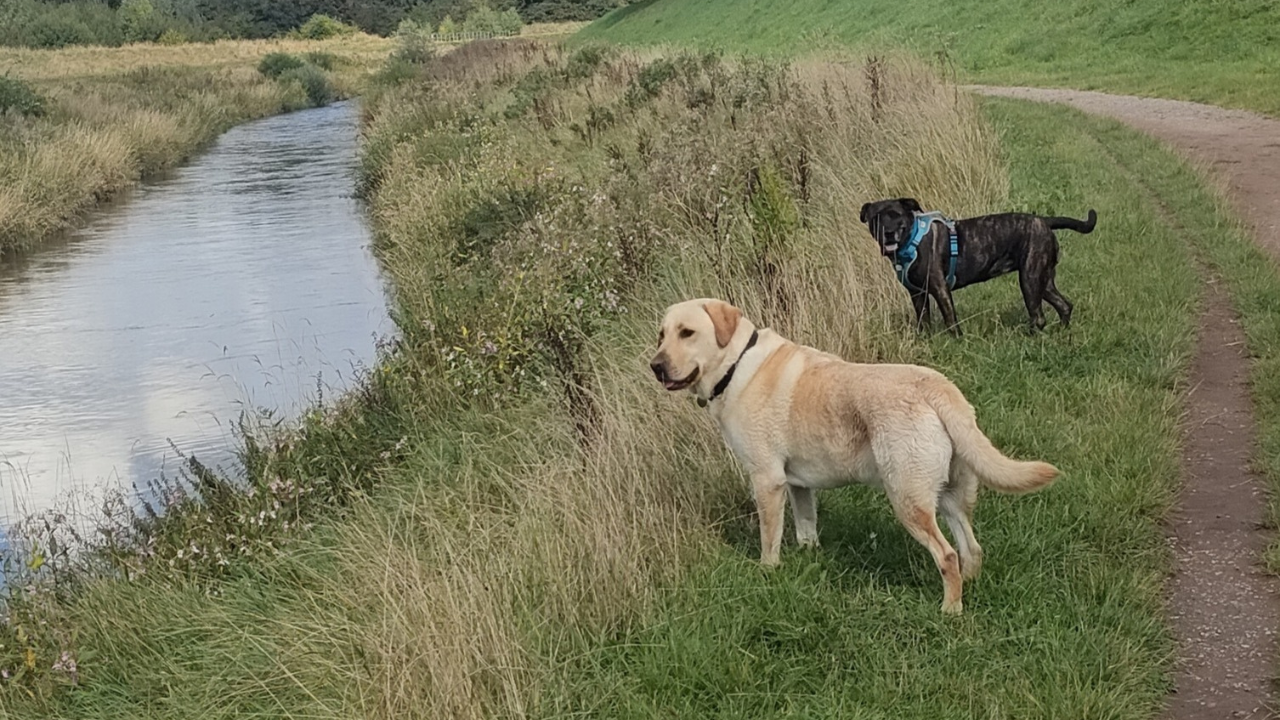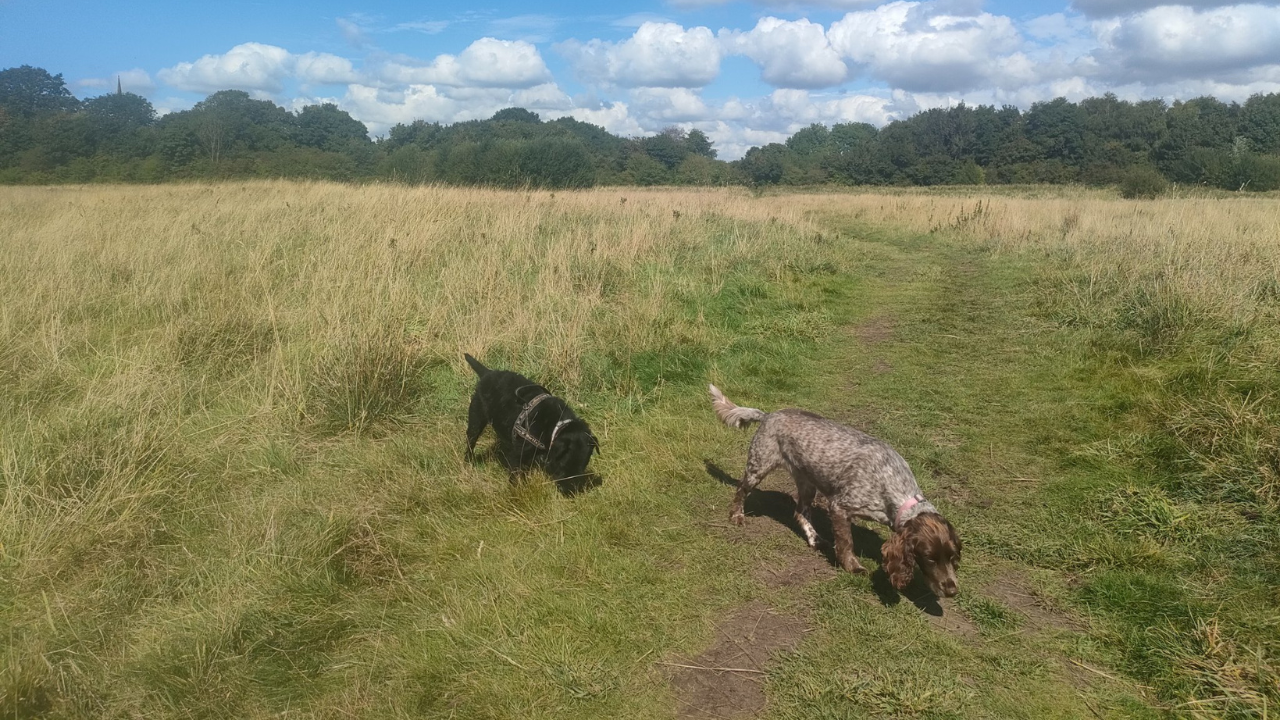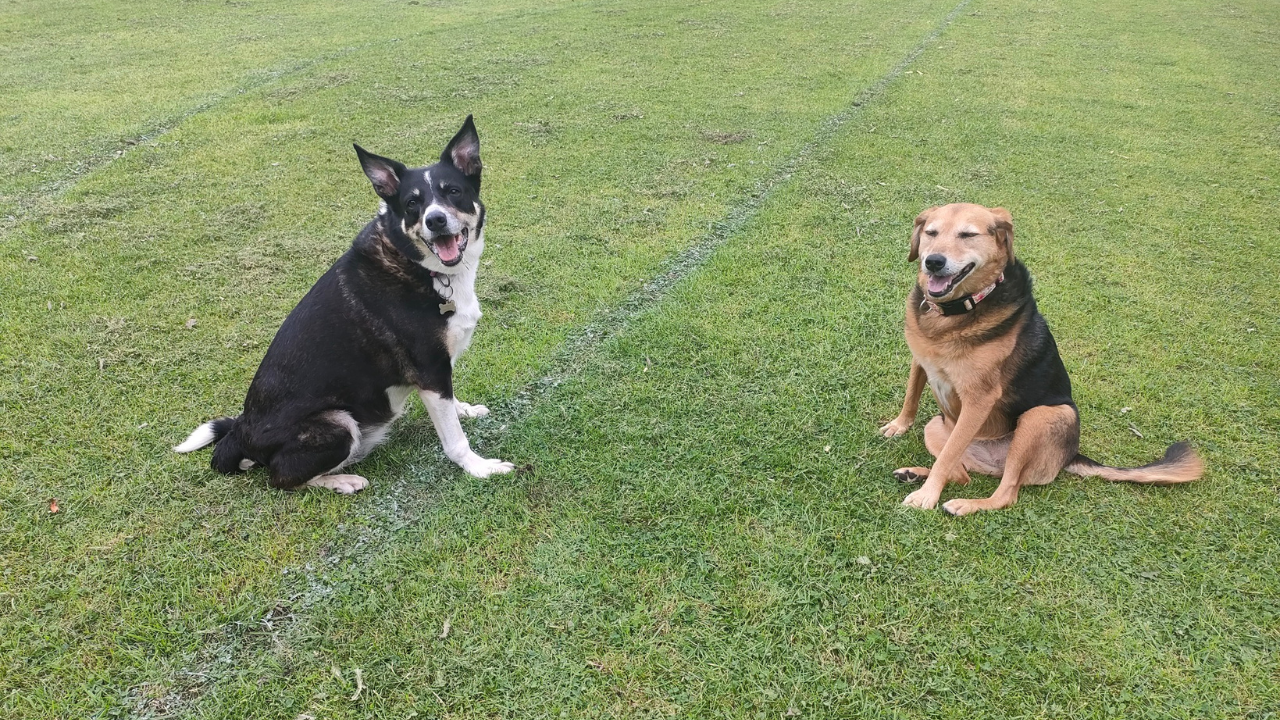Wellbeing on Walks

Guest blog by Billy de Goede.
When it comes to walking our dogs there are so many things to consider to ensure their individual needs are met and their wellbeing is the top priority. Professional dog walker, Billy de Goede, explores the intricacies of what we need to be aware of and consider when walking our own dogs and, indeed, our clients' dogs too.
Consider where
I like to take “my” dogs (i.e. clients’ dogs who I walk) somewhere different every day – even if it is to the field on the left of the car park on day one and the field on the right of the car park on day two. Fortunately, in South Manchester we have a reasonable variety of places, from fields, to common land, along the river Mersey and woodland. Some places, however, are home to ground nesting birds and not suitable for those with very high prey drive. And while the whole area is well used by professional dog walkers as well as dog walking members of the public, some places are busier than others, and it’s these places that I try to avoid with my dogs who are less tolerant of other canines.
One of my dogs absolutely loves catching and diving on clumps of mowed grass, so when the common (which includes sports pitches on which dogs are allowed) has been mowed, I make sure to take his group there so we can have a good game of “grass-kicking”.
Some of the dogs love to swim or mooch along the river bank right by the water. While it’s mostly safe, after heavy rain the river is swollen and flows very fast. On such days, I will choose walks that don’t go anywhere near the river; it’s difficult to explain to a group of enthusiastic dogs why they could swim and paddle the other day but not today, especially when we’re so close.

Be prepared to make adjustments
I often remind my clients to let me know if anything has happened recently that could impact on a dog’s behaviour during their walk: the window cleaner, parcel delivery and the bin lorry all on the same day, for instance, will mean that one of the dogs will be incredibly trigger stacked before we’ve even started the walk. In that case, I will change plans: rather than going to the nearby water park, which is a lovely walk but with a very busy car park and café/picnic area to cross at the start, I’ll drive another 5 minutes to go for a quieter walk.
Another dog has very busy weekends, with lots of walks and places to visit, and is often quite tired on Mondays. So on Mondays we go on a quiet mooch, somewhere with not too many other dogs, as he can struggle with them, especially when he’s tired.
Wellbeing during the walk
Besides being mindful of where I walk them, I observe body language during the walk, distracting dogs or taking action like suddenly, swiftly changing direction if needed (to avoid a trigger or clashes with other, approaching dog walkers).
Recently, I found that a young Lab, who I walk, has a much improved recall when he has a ball to carry, so he now gets a ball when we are out. He loves a good game of fetch, but I am mindful of the damage this can do to his joints as well as the possibility of creating a dog who is obsessed with chasing his ball. So playing a game of fetch for a couple of minutes only is used as a reward for making the right choice in a challenging situation, like recalling away from another dog. I will also throw the ball into the tall grass, so he’ll have to look for it, spending less time “going all out”, while spending at least as much energy. He also wants to lie down for a rest quite frequently, so we just stop for a while until he expresses that he’s ready to continue.
Practically, especially during the last sunny months, I carry water with me and at one or more shady spots call for a “pit stop”, where we spend some time in the shade, dogs can have a drink and a quiet mooch. I might sprinkle a handful of tiny treats around to encourage some quiet time, and some dogs just grab the chance of getting a good scratch, a belly rub or a cuddle! Lately, some of the dogs have discovered a cool, shady spot by a tree, not far from the end of our walk. Rather than carrying on to the car, we stop there and just sit or lie down in the grass for a while. It most certainly takes our walking time to well over an hour, but, as long as no one else is being kept waiting, it doesn’t really matter 😊
Dogs love to sniff, it’s a given, and my walks are mostly “sniffaris”. Having done a fair bit of training in agility and dog parkour, I may use our natural surroundings (i.e., plenty of logs where we walk!) and invite dogs to do things like jump over, climb up on, go under etc. Many dogs are keen to join in, but there is no pressure if they don’t. While asking any behaviour, I take dogs’ physical capabilities into consideration: I won’t ask a dog with arthritis to jump on or duck under a fallen tree, for instance.
I might also hide small treats higher up off the ground, to encourage dogs to “expand their sniffing horizon”, so to speak; park benches are great for this! I’ve noticed that it gives one of my older dogs a real buzz; she can’t keep up with the faster games anymore, but years of experience of our walks are “giving her an edge” over the younger dogs and she’ll find treats at nose height more easily. I should add that none of my dogs have resource guarding issues over food, so this is never a problem.

Consider who
Not all dogs like each other: One doesn’t like puppies, another one really does not like sight hounds, and the little dogs generally don’t like anyone who’s taller than them. In order to avoid dogs falling out, bullying or being bullied, I make sure that certain dogs are never walked in the same group. As a consequence, I might have one group fully booked but availability in the other. If I then get a last-minute request for a walk for a dog who would fit in the first but not in the second group, I won’t offer that place to the “late comer”, simply because the result would be a walk that would not be enjoyed by anyone.
When I am contacted by dog owners looking to sign their dog up for walks with me, I will enquire about the dog’s breed, temperament, age etc in order to decide whether they would fit in with an existing group. Many of my dogs have been with me for many years, and I don’t think it’s fair to expect them to put up with a new dog who would obviously not fit in - nor would it be fair on the new dog.

I currently walk a lovely, very energetic Labrador who is nearly a year old now. I’ve been walking him on his own, first of all because he wasn’t old enough for one hour, off lead, group walks, and secondly because the first group of the day is just not suitable for him. A dog, who I’ve been walking for 9 years has developed arthritis and is not at all keen on dogs running and jumping around her. She absolutely loves her walks with me, and my client (her owner) is very keen for her to continue coming out with us once a week. Their vet is fine with this. Although I would have availability in this group, I feel it would upset the older dog and frustrate the young Labrador, so I will continue to take him out separately on the day that she joins us.
On that note, when hour-long group walks are no longer what makes dogs happy. Within the past year, I’ve had two dogs whose physical abilities meant that they did no longer enjoy their walk; an hour had become too long and they were physically uncomfortable. Fortunately, I have a good working relationship with another dog walker, and when mentioning this to her, she told me that she had just started an “OAP group”: quiet, calm, half hour walks for those who need it. It’s a service that I’d love to offer but just don’t have the time for. Knowing this, however, I spoke to my clients and although I had to break the sad news that I thought that their dogs did no longer benefit from our walks, I was also able to point them towards the other dog walker. If the other dog walker hadn’t started up this new service, I still would have advised my clients the same, but being able to offer an alternative that is far more suitable for their dog made the conversation a lot easier.
I hope that this gives you a reasonably good idea of what it’s like to walk groups of dogs (mostly) off lead. While a certain amount of training is involved, the biggest difference is that I train dogs skills (like recall) that are important for their (and my!) wellbeing during our walk, and that over time I develop a bond with them. Some dogs have been with me for at least one hour a week for most of their lives, with some coming on walks five days a week! This obviously creates a bond that I’d never have had, had I become a dog trainer, doing six-week classes or even one-to-one training with the owner.
For me, rather than training, it comes down to managing: everyone’s wants, needs, foibles and triggers, maintaining a positive, reasonably relaxed environment, while keeping an eye on the time and clients happy! I also take a very large number of pictures every week! These are posted on my Facebook page, Billy Walks. By all means, have a look 😊
Billy de Goede is a professional dog walker based in South Manchester in the UK. You can find out more about Billy at https://www.billywalks.com/ or on Facebook as https://www.facebook.com/BillyWalks. Words and images by Billy de Goede, used with permission.


